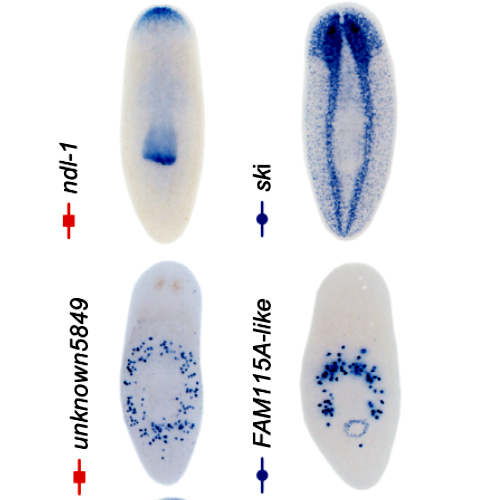Antagonistic Self-Organizing Patterning Systems Control Maintenance and Regeneration of the Anteroposterior Axis in Planarians.
Planarian flatworms maintain their body plan in the face of constant internal turnover and can regenerate from arbitrary tissue fragments. Both phenomena require self-maintaining and self-organizing patterning mechanisms, the molecular mechanisms of which remain poorly understood. We show that a morphogenic gradient of canonical Wnt signaling patterns gene expression along the planarian anteroposterior (A/P) axis. Our results demonstrate that gradient formation likely occurs autonomously in the tail and that an autoregulatory module of Wnt-mediated Wnt expression both shapes the gradient at steady state and governs its re-establishment during regeneration. Functional antagonism between the tail Wnt gradient and an unknown head patterning system further determines the spatial proportions of the planarian A/P axis and mediates mutually exclusive molecular fate choices during regeneration. Overall, our results suggest that the planarian A/P axis is patterned by self-organizing patterning systems deployed from either end that are functionally coupled by mutual antagonism.

- Dev Cell. 2017 Feb 6;40(3):248-263.e4
- 2017
- Developmental Biology
- 28171748
- PubMed
Enabled by:
